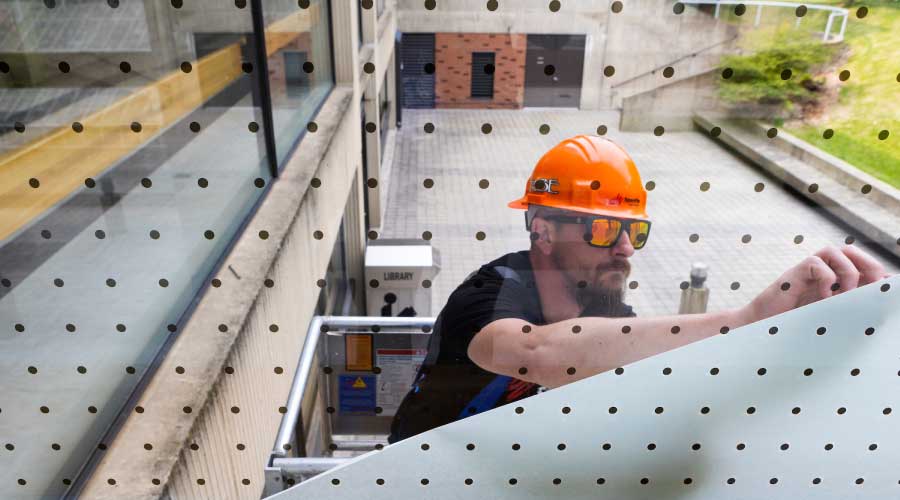Bird Safety Comes into Focus for Facility Managers
As architects incorporate more glass into their building designs, managers seek ways to reduce bird collisions.
By Doug Carroll, Contributing Writer
The story seemed too bizarre to be true: Nearly 1,000 songbirds had perished in just one night in early October after crashing into the windows of the McCormick Place Lakeside Center in Chicago.
The sheer number of dead birds was astonishing and highly unusual; the normal number in a night would be 15 or fewer. But the story was indeed true — and it’s fairly common in large cities during spring and fall migration.
A study in 2014 by the Smithsonian Conservation Biology Institute and the U.S. Fish and Wildlife Service estimated that nearly 1 billion birds die this way annually. Even those that survive may suffer crippling injuries such as bruising, eye ulcers and fractures.
Birds don’t perceive clear or reflective glass as a solid object, so they can’t comprehend that it is a lethal barrier. And when they see the reflection of plants or bushes in the glass, they fly straight into trouble.
“As we build, we build with a lot of glass, and we inadvertently build traps (for birds),” says Anne Clark, associate professor of biological sciences at Binghamton (N.Y.) University, where bird deaths along a two-story, glassed-in walkway at a science building became a concern.
Clark and colleague Julian Shepherd worked with facilities staff at the university on the problem.
The cost of replacing the existing glass with bird-friendly glass was deemed prohibitive, so a local contractor was brought in to apply quarter-inch adhesive vinyl dots, on 2-inch centers, to the glass. Research has shown that most birds will not attempt to fly through spaces less than 2 inches high and 4 inches wide.
“If you care about bird strikes, you pretty rapidly come to the conclusion that you need to put something on the windows,” says Bob Kelleher, the owner of SpeedPro Central New York, which did the job on campus in a day’s time this past summer after extensive prep work in the shop.
Kelleher said the challenge increases exponentially with more buildings — and more glass — involved.
“For facility managers with acres of windows, it’s a daunting process,” he says. “Especially for buildings that have been built and paid for. But people now are becoming more sensitive to (the problem).”
Long term, the issue needs to be addressed at the building design stage with different types of glass that are bird-friendly. Clark said some of these have high R-values and feature built-in etchings that work much like the dots to deter birds.
Awareness has increased. In 2020, the Chicago City Council passed an ordinance requiring bird safety measures in new buildings, although the council has yet to implement the requirements. The city also participates in Lights Out, a National Audubon Society program in which a building’s interior lighting is turned off unless staff, clients or visitors need it.
However, there is some catching up to do. The first buildings at McCormick Place, the largest convention center in the U.S., were constructed in 1959.
“When it was built, people weren’t thinking about bird safety,” David Willard, a retired bird collections manager at Chicago’s Field Museum, told the Associated Press. “They still aren’t in most architecture.”
But in some places, significant change has already come — and the results are encouraging.
Bird-friendly glass, with a pattern of tiny dots, was installed in 2014 at New York City’s Jacob K. Javits Convention Center as part of a major renovation to improve energy efficiency. Bird strikes at the center subsequently declined by more than 90 percent, according to the American Bird Conservancy.
New York City now requires bird-friendly glass on all new construction.
Doug Carroll is a freelance writer based in Chandler, Arizona.
Related Topics:








